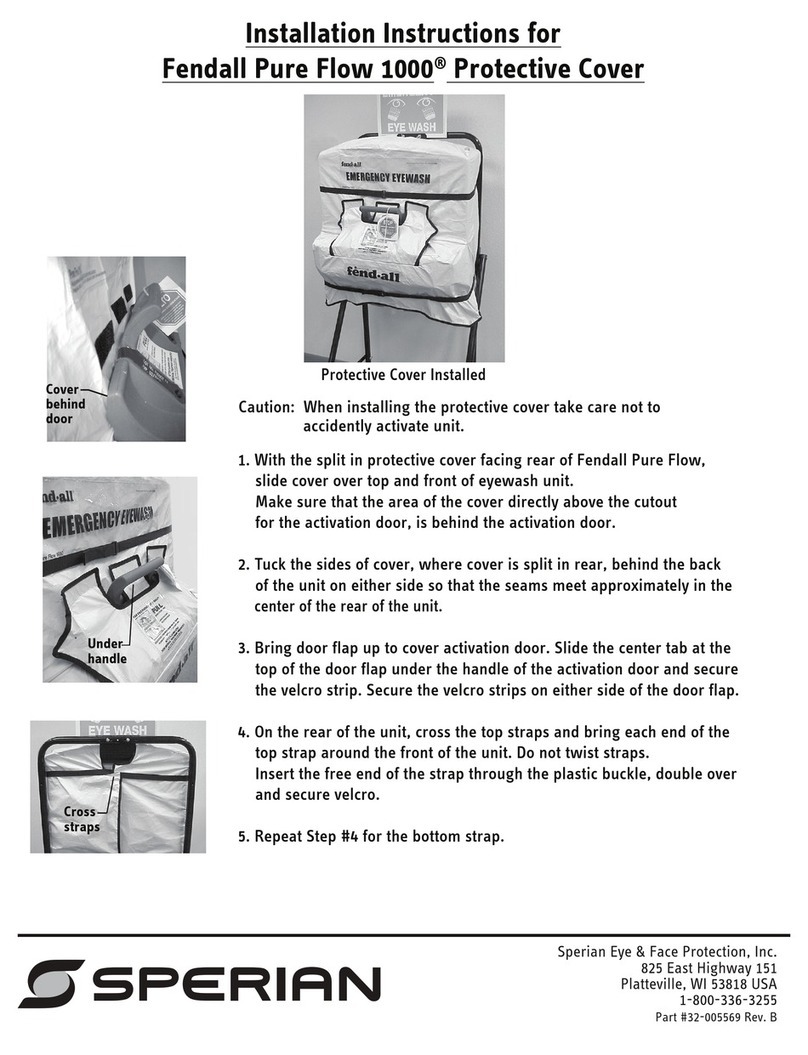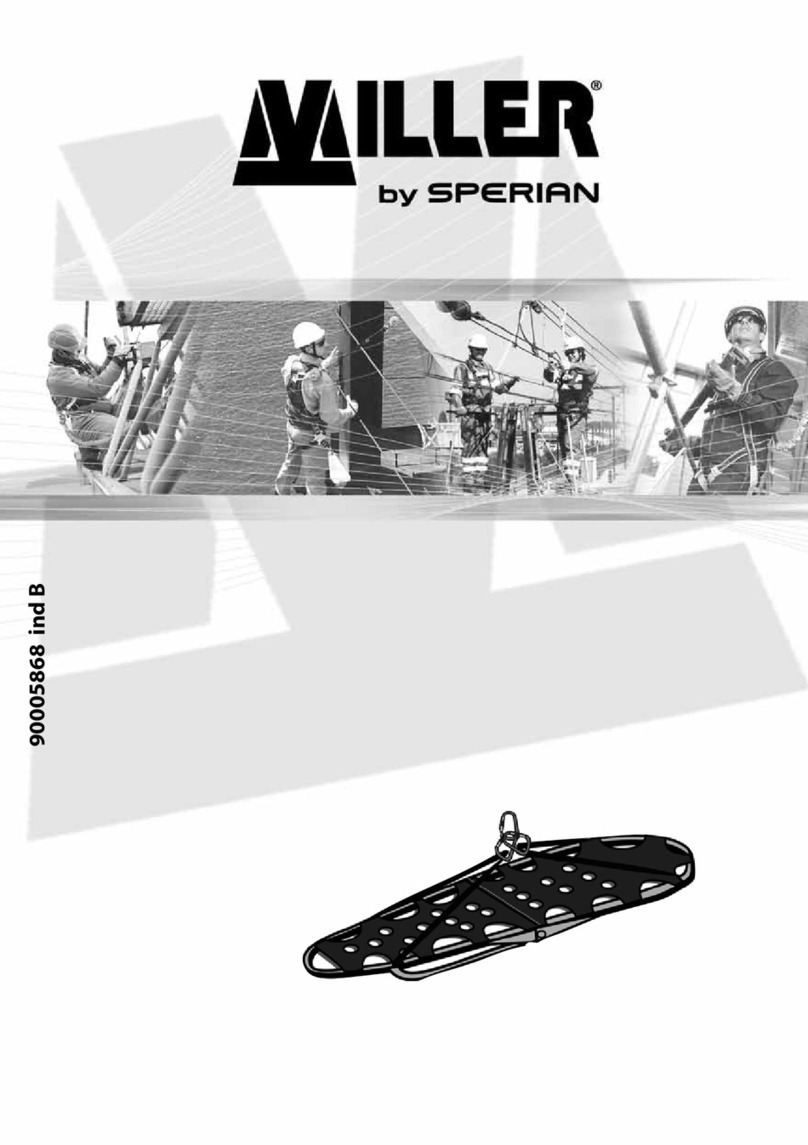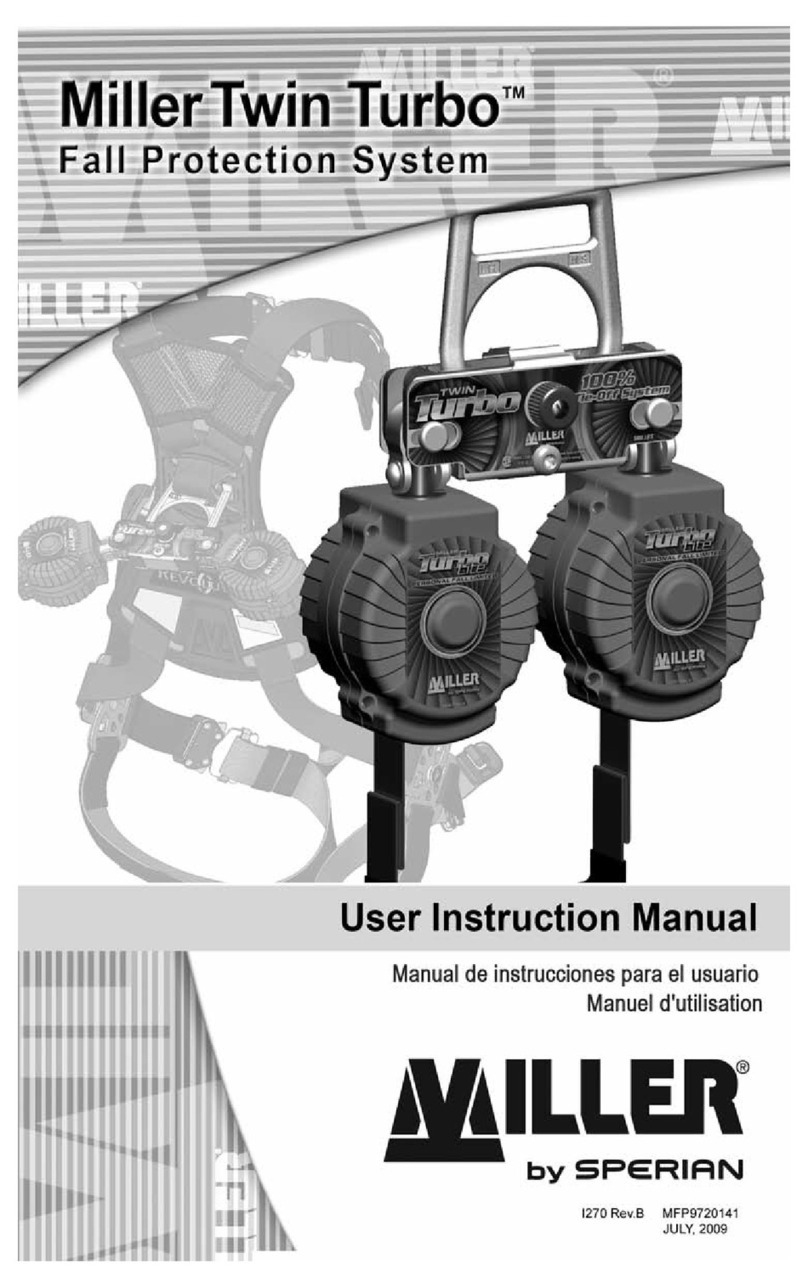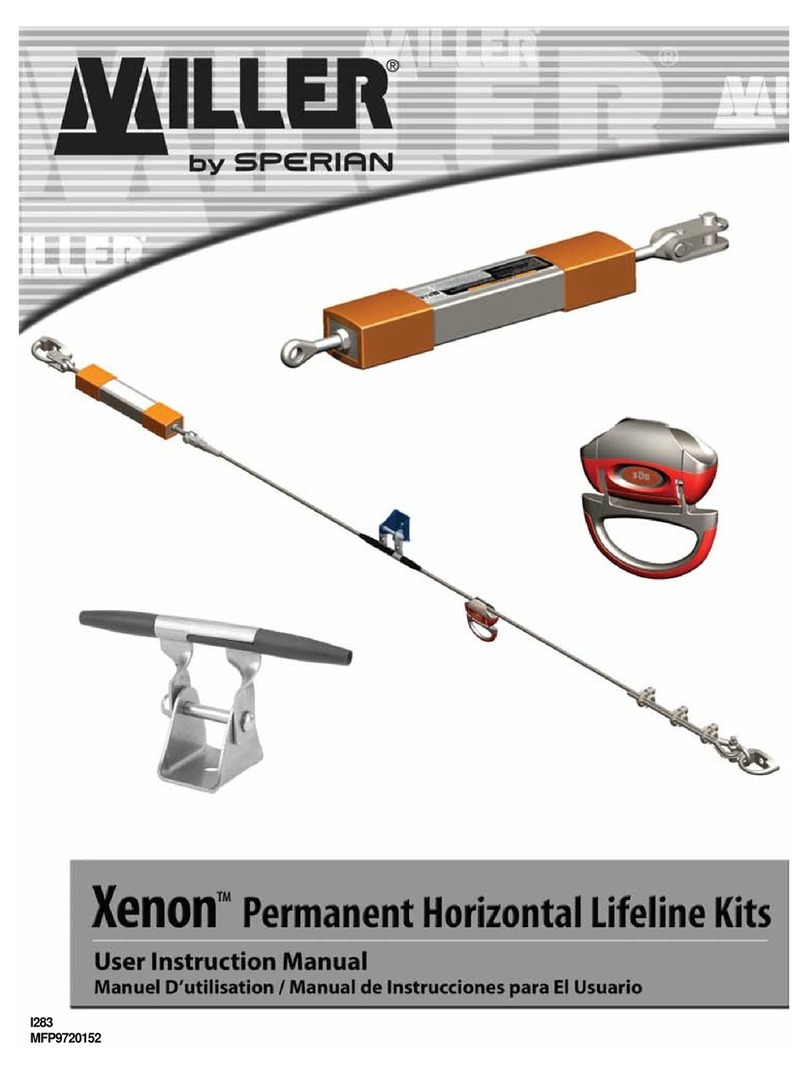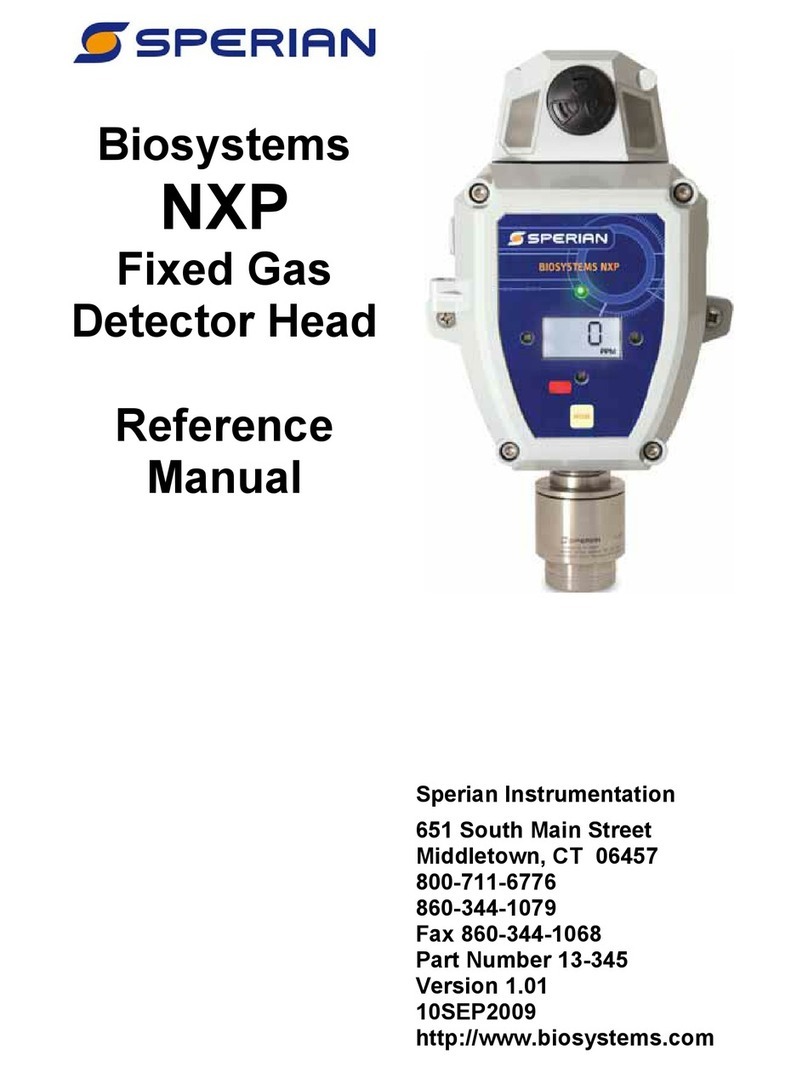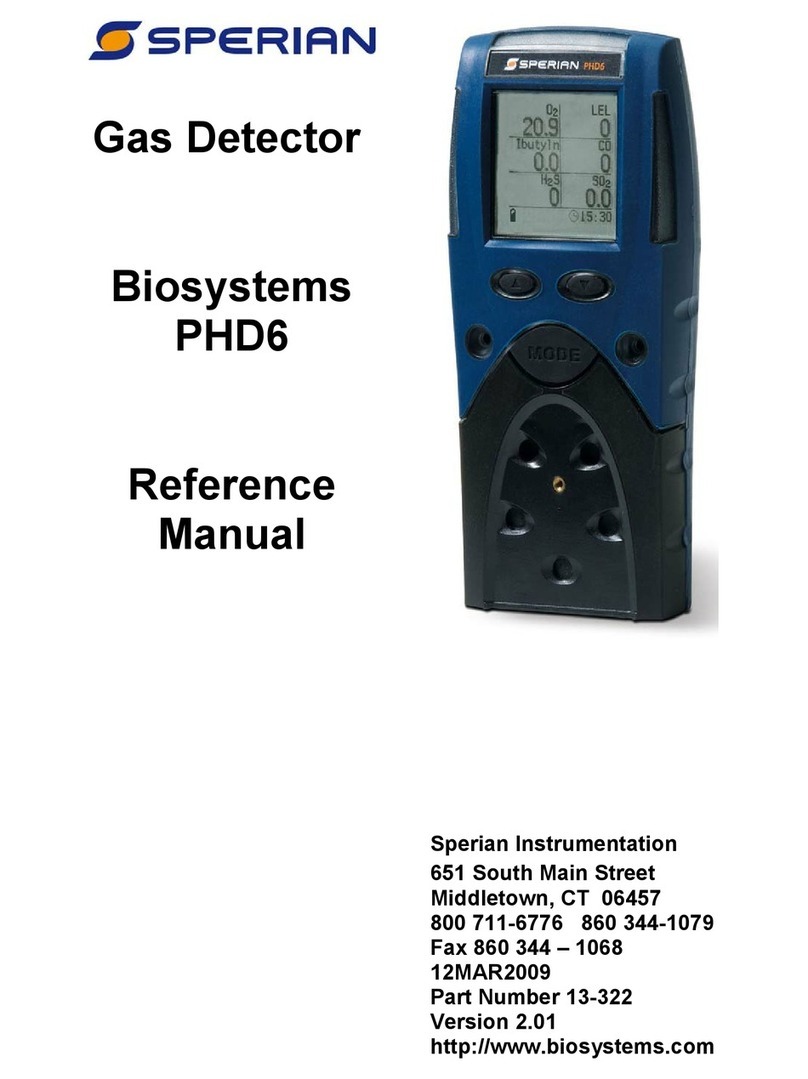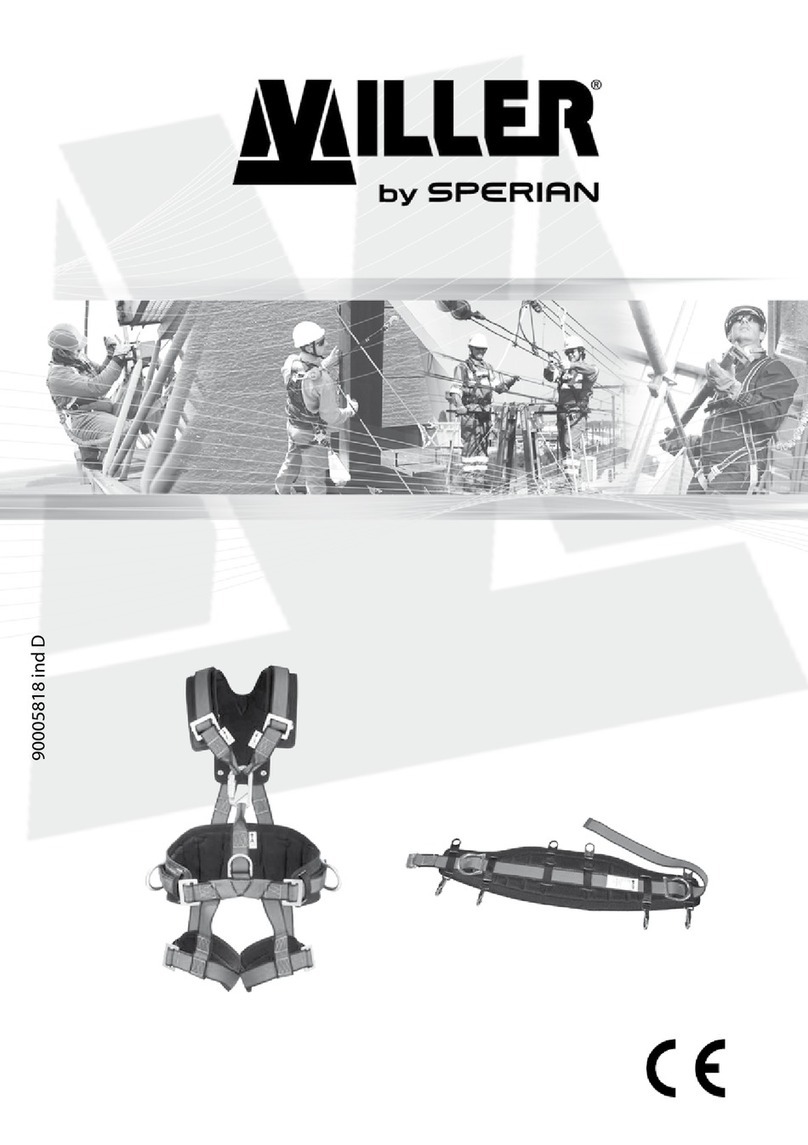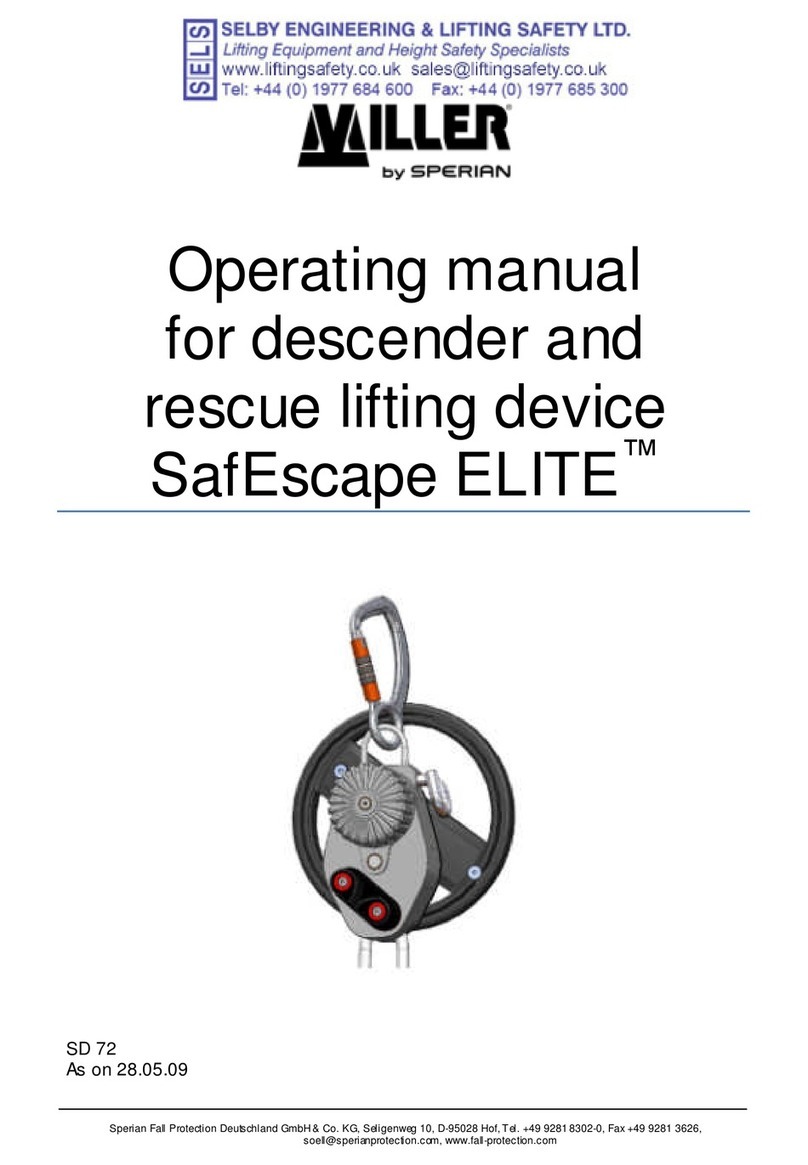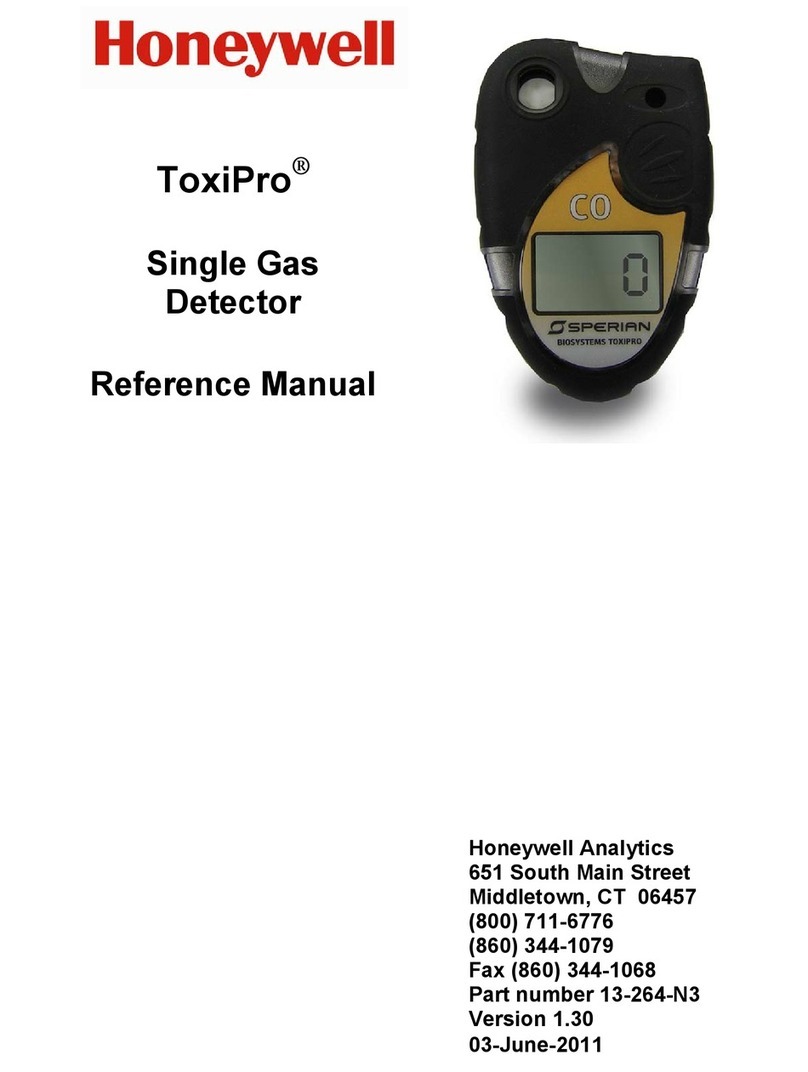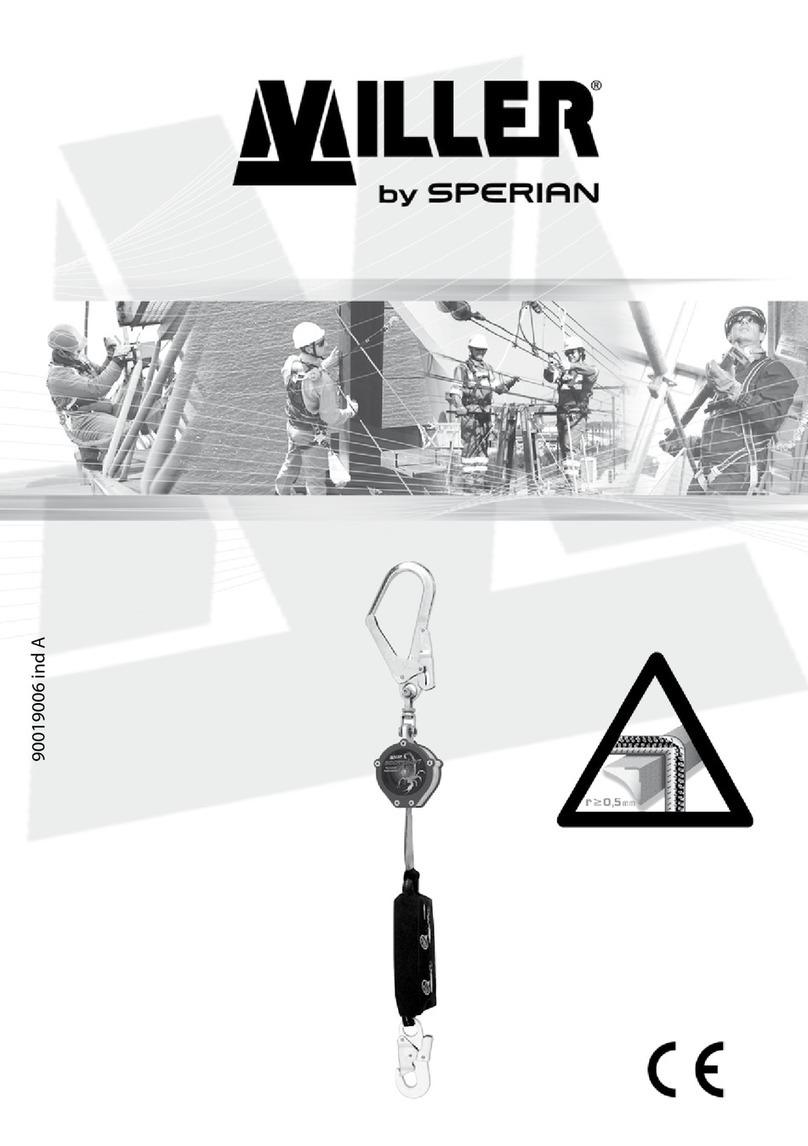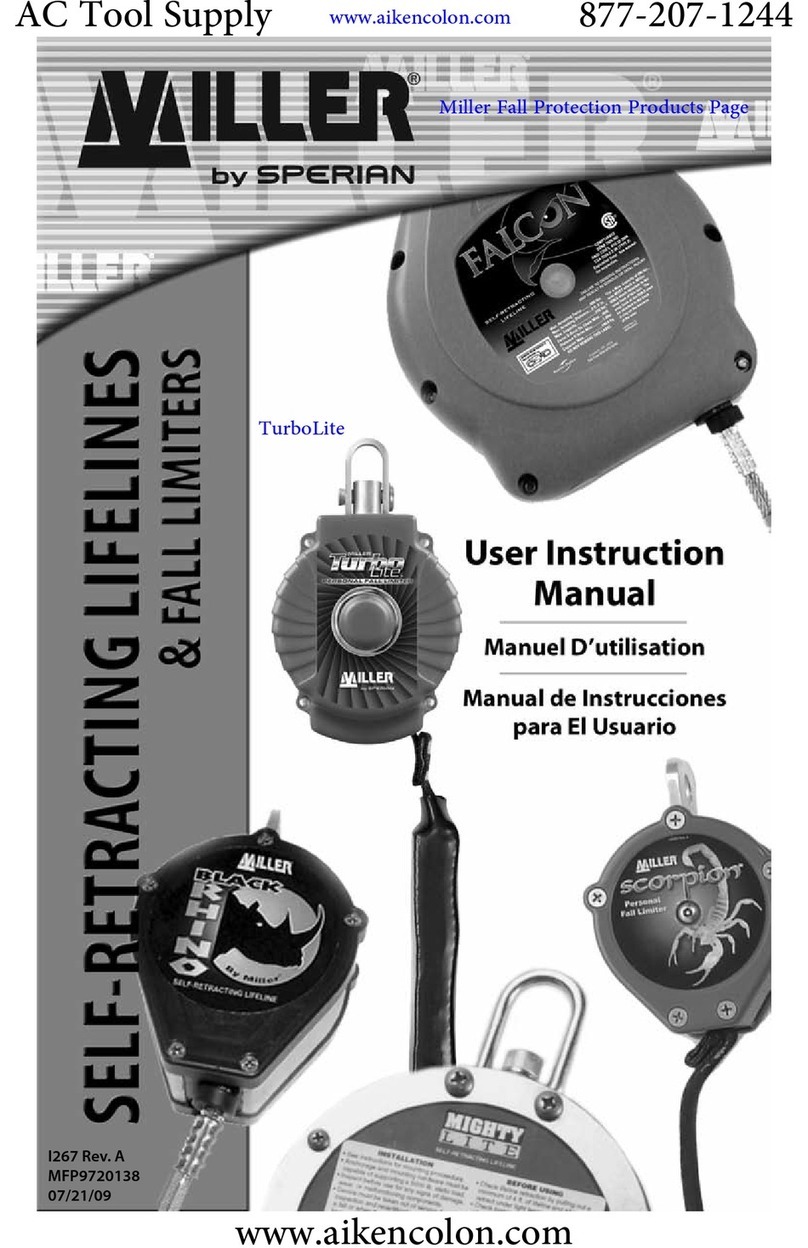
7
(ropes, etc. …) or cf. EN353-1 for ri-
gid work positioning supports (cable,
etc.…) of the same BRAND.
CONNECTION
The slide must be used with a fall ar-
rest harness (cf. EN 361). It must never
be used with a work positioning sys-
tem (belts). It must be connected to
the harness EXCLUSIVELY using the
connector supplied. Connect the mo-
bile fall arrester to the front attaching
point of the harness.
NEVER ADD AN ADDITIONAL
LINKING ELEMENT BETWEEN THE
SLIDE AND THE HARNESS
INSTALLATION
Attach the end of the anchorage sup-
port (rope or cable) to the anchorage
point using a connector in conformity
with standard (EN 362). Only the re-
commended diameter and type of
work positioning support are to be
used. If possible, weight or attach the
other end of the anchorage support.
If it becomes necessary to open the
slide so as to t it to the support, ope-
rate as shown by the diagrams concer-
ning your fall arrester. In addition, for
units with two operating positions
(slide/lock), make the change in a safe
position.
Important recommendations : When
a manual fall arrester (or a fall arrester
in the manual position) is being used,
the bottom end of the rope must be
attached or heavily weighted. Check
the compatibility of the fall arrester
with the anchorage support.
CHECKING BEFORE USE
Before each use, carry out a tho-
rough visual examination to ensure
that thePPE, as well as any other
equipment with which it could be
associated (connector, lanyard…) is
complete. Make all necessary arrange-
ments for the implementation of any
rescue in total safety. In the event of
your product being damaged, consult
the manufacturer or his agent. If you
have any doubts regarding the safe
condition of the product, or if the pro-
duct has been usedto arrest a fall,it is
essential to your personal safety that
the PPE be withdrawn from service
and sent back to the manufacturer or
a qualied repair centre for checking,
or destruction. Following examina-
tion, the centre will either deliver or
refuse written authorisation to re-
use the PPE. It is strictly forbidden to
modify or repair a PPE yourself. Only
the manufacturer or a repair centre is
qualied to carry out these repairs. If a
complete system is supplied, it is pro-
hibited to replace the components.
Before each use, check the condition
of the mobile fall arrester and the
work positioning support. Check the
following points with care:
Correct and complete closure of
the slide,
Securing of the locking cam,
General appearance of the ancho-
rage line and more particularly its
amount of wear,
Check the general appearance of
the anchorage support and more
particularly the amount of wear,
The absence of deterioration
(tearing breakage, wear, burning,
etc…),
Correct operation of the
carabiners,
Absence of signs of corrosion or
deformation.
AIR CLEARANCE
Before using a cable drum, check for
a minimum space clearance below
the user’s feet as necessary, to prevent
any collision with the structure or the
ground. Allow a minimum 3 m air clea-
rance under the user(cf.1).
Caution:
The user may not be protected from
falls onto the ground for the rst 2
meters.Therefore, take additional care
when climbing or descending.
PERIODIC EXAMINATION
These instructions must be kept with
the product. Fill in the identication
sheet and enter the markings informa-
tion. This periodic examination, which
veries the eectiveness and strength
of the equipment is indispensable
in guaranteeing the user’s safety. A
qualied person (manufacturer or a
person or organization authorized by
the manufacturer) must examine this
equipment at least once each year,
in strict compliance with the instruc-
GB
